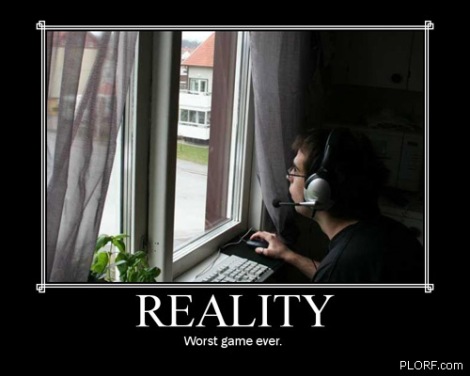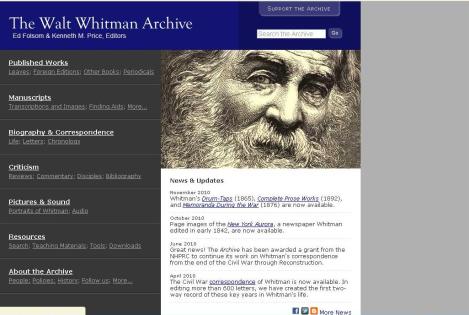Technology is often described as “transformational”, but who would have thought the internet would have such an impact on society. With the internet around for over twenty years now it is very surprising that it is only now it is taking over the world of reading. Reading has never been so easy: new computer technology and ‘gadgets’ have made access to reading material easier than ever. It is also cost efficient and with the hard times we are currently facing is it any wonder people are opting for the cheaper alternative of downloading reading material.
Before printing came into force stories and knowledge were passed on orally from memory but for as long as we have known everything has been available to us via print. Now that the digital age is taking over, with the ever increasing popularity of eBooks, kindles and ipads etc people are now downloading more than ever. Technology is constantly changing, improving and making our lives easier. But is it making it too easy? The way we read has changed and with continual updates in technology a question that is commonly asked is how is the way we read affecting the way we think and how we consume information?
As humans we are programmed to think in a linear fashion. Linear thinking is a process of thought following known cycles or a step-by-step progression where a response to a step must be elicited before another step is taken. The internet works in a non-linear fashion, it is not restricted, and it can go off in any direction it wants. This is why when you key in just one word into a search engine it provides you with a number of results. It can find relevant information quickly because it is not confined to take just one route. Non-linear thinking is best explained by comparing it to a brainstorm. Thoughts go off in multiple directions; there are a number of possible starting points. A problem with linear-thinking is that as a thought process we are forced to agonize over where to start, hence the delayed start to carrying out the action. With so many options we are less focused and more easily distracted. A perfect example of this is when we are on a website such as Wikipedia. I find I would be reading then I see a link that I find interesting but not necessarily relevant to the task I am meant to be performing. Before I know it I am off track. T.S Elliot once said “To be distracted from distraction by distraction”. With the internet we read and think in different ways and we do not even realise we are doing it. This makes it an incoherent reading experience. A Roman Philosopher once said “To be everywhere is to be nowhere”. Looking at a screen our thoughts become scattered and our memories weakened.
With online reading proving to be a success, it seems that with the introduction of kindles and other technologies reading appears to becoming social again. Many people have direct links from their twitter or facebook accounts to their kindle or ipad. They can discuss books they have just read, upload passages, and request information on books they wish to read and receive feedback. Although the use of such technologies has made reading social, it is important to look at the cognitive effects. Developmental psychologists have found that our thinking has become less vigorous and automatic. Every medium we use develops some cognitive skill at the expense of another. Our growing use of screen based media has strengthened our visual spatial intelligence. An example of what I mean by this is that you are able to visualise things in your mind, the ability to know where you are in regards to space (i.e. good mapping skills). This strength is accompanied by new weaknesses in higher cognitive processes. Our thinking is not as critical anymore and our problem solving skills are impaired. What I have come to notice is the over-use of the phrase “Google it”. When faced with a problem or in need of an answer to a question instead of thinking about it ourselves we are tuning to Google. I recently read an article which said and I quote “What the net seems to be doing is chipping away our capacity for concentration and contemplation. The internet is steering us towards the ‘shallows’”.
When reading off the net we are more likely to skim read or speed read. Now it is almost automatic. We have developed a skill which allows us to read an article and quickly pick out relevant sentences or phrases. This is a good skill to have, as we all know sometimes it is impossible have enough time to read everything. However, will this automated habit of skim reading affect our reading of a novel off an ipad or kindle? We are more likely to skim read when reading off a screen than we are when reading a paperback. When reading we use two pathways: The ventral pathway and dorsal stream way. The ventral route accounts for most of our reading, it is efficient and direct. This pathway makes reading seem effortless. We see letters, convert them into words and attach a meaning. The dorsal stream switches on when have to focus more on what we are reading, for example with bad handwriting we have to concentrate that bit harder to make it legible, or to understand a difficult word. This extra work in a sense wakes us up – we pay closer attention to what we are reading. E-books and other technologies have a bright clear screen and they even have an app where words can be defined. The slower we read the more we absorb both consciously and unconsciously. We do not just scan the words, we contemplate their meaning. Although it is now easier to read than it ever was it is important to make sure that the reading experience does not become too easy.
Reading digitally is the way forward but there are people for and against it. Some love that they can have any number of books that they have stored on one device whilst others will refuse to let go of their hardback. In spite of all the conflicting arguments, one factor that will always be constant is that it is the meaning behind the words that will forever remain important not what we read them from.
1) http://www.guardian.co.uk/search?q=the+internet+and+the+reading+experience&date=date%2Flast30days
2) http://www.wired.com/techbiz/people/magazine/17-06/st_thompson
3) http://www.telegraph.co.uk/technology/internet/7967894/How-the-Internet-is-making-us-stupid.html
4)
Reply Forward
 James Cummings article on TEI and the study of literature gives us a detailed account of the purpose of digitizing. The overall concept of TEI was so that originally printed texts to become electronic texts in the majority of linguistics and literary disciplines. It also sets guidelines, these guidelines are used for many text encoding projects. With new projects and new recommendations, they change as a result of both technology and theory. SGML and XML are constantly evolving and improving.
James Cummings article on TEI and the study of literature gives us a detailed account of the purpose of digitizing. The overall concept of TEI was so that originally printed texts to become electronic texts in the majority of linguistics and literary disciplines. It also sets guidelines, these guidelines are used for many text encoding projects. With new projects and new recommendations, they change as a result of both technology and theory. SGML and XML are constantly evolving and improving. Marie-Laure Ryan focuses her attention on immersion, how a reader has the ability to immerse oneself from the real world into another world created by imagination. She begins by pointing out that there is nothing more enjoyable than the immersion of the embodied mind into the fictional world. Unlike non-fiction texts we can let the imagination run wild, there are no restrictions enforced like there are in the real world. Ryan exercises the point that immersion is still the most fundamental of literary pleasures. In Wordswoth words we have to ‘suspend disbelief’ in order to achieve complete and utter immersion in a text. This article aims to investigate how digital media affects the experience of fictional worlds and the practice of fiction. We all know what fiction is and how much fun it can be. We have all spent countless hours playing make believe games, and for the duration of the game we have spent our time complete immersed, the world we were acting in at the time was every bit real to us. Ryan describes this as ‘virtual reality’, throughout this article she places immense emphasis on the role of the imagination.
Marie-Laure Ryan focuses her attention on immersion, how a reader has the ability to immerse oneself from the real world into another world created by imagination. She begins by pointing out that there is nothing more enjoyable than the immersion of the embodied mind into the fictional world. Unlike non-fiction texts we can let the imagination run wild, there are no restrictions enforced like there are in the real world. Ryan exercises the point that immersion is still the most fundamental of literary pleasures. In Wordswoth words we have to ‘suspend disbelief’ in order to achieve complete and utter immersion in a text. This article aims to investigate how digital media affects the experience of fictional worlds and the practice of fiction. We all know what fiction is and how much fun it can be. We have all spent countless hours playing make believe games, and for the duration of the game we have spent our time complete immersed, the world we were acting in at the time was every bit real to us. Ryan describes this as ‘virtual reality’, throughout this article she places immense emphasis on the role of the imagination.  Vandendorpe’s
Vandendorpe’s 

 Aimeee Morrison discusses the phenonemon of the blog or blogging and how it has changed (or how it is still changing). She clearly defines blogs and blogging and focuses on the popularity of blogging, how it is used, who uses it, the privacy aspect of it and as the article unfolds she takes us into the depths of the blogosphere.
Aimeee Morrison discusses the phenonemon of the blog or blogging and how it has changed (or how it is still changing). She clearly defines blogs and blogging and focuses on the popularity of blogging, how it is used, who uses it, the privacy aspect of it and as the article unfolds she takes us into the depths of the blogosphere.